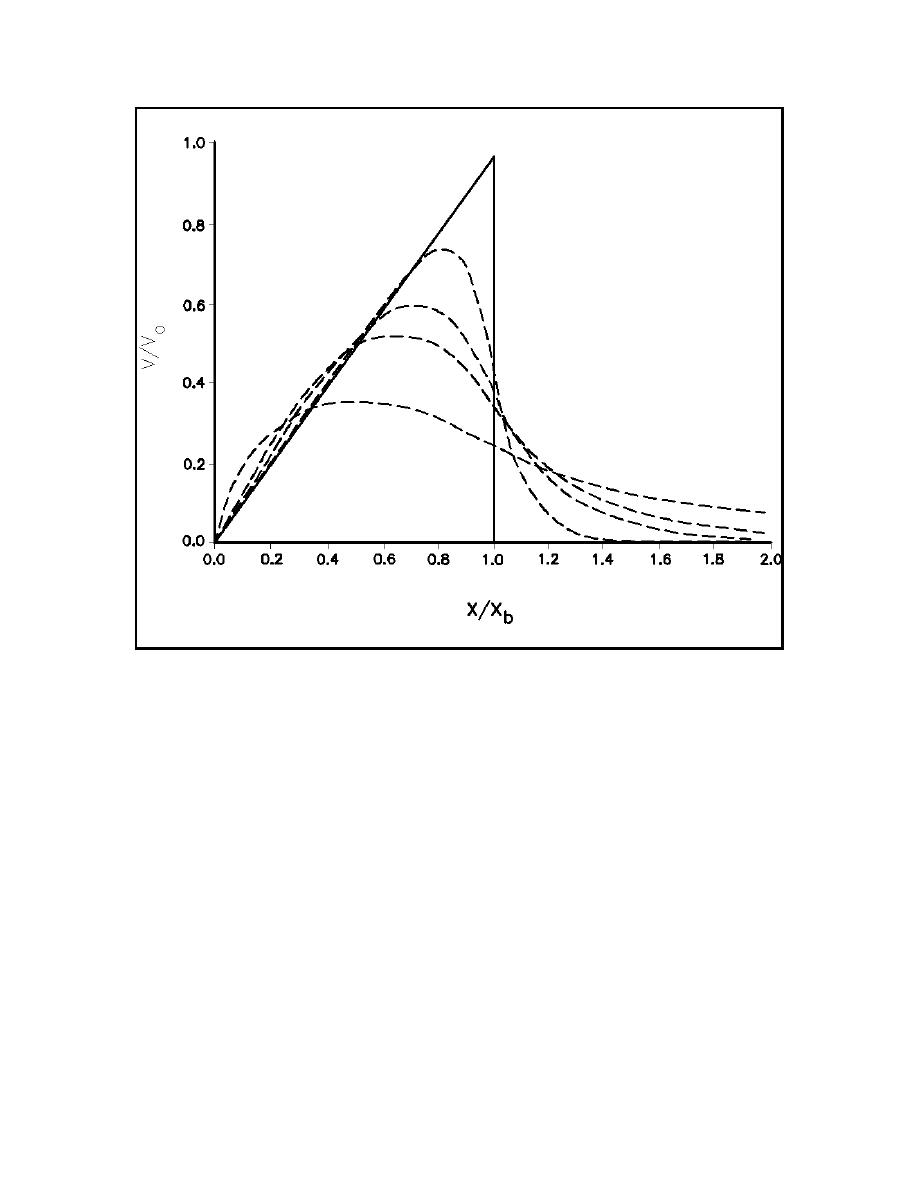
EM 1110-2-1100 (Part II)
31 July 2003
Figure II-4-15.
Longshore current profiles (solid line - no lateral mixing; dashed lines - with lateral
mixing)
(6) Equation II-4-40 shows good agreement with available longshore current data (Figure II-4-16).
Although Equations II-4-39 and II-4-40 are similar in form, Equation II-4-4037 is independent of beach slope,
which implies that tan β/Cf is constant in Equation II-4-39. The interdependence of tan β and Cf may result
from the direct relationship of both parameters to grain size or an apparent dependence due to beach-slope
effects on mixing (which is not included in Equation II-4-39) (Komar 1979, Huntley 1976, Komar and
Oltman-Shay 1990).
(7) Longshore current, eliminating many simplifying assumptions used in Equation II-4-39, is solved
numerically by the model NMLONG (Larson and Kraus 1991) for longshore-homogenous applications.
NMLONG, which was briefly discussed for the simulation of breaking waves, calculates wave and wind-
induced longshore current, wave and wind-induced setup, and wave height across the shore. Figure II-4-17
gives an example NMLONG calculation and comparison to field measurements of wave breaking and
longshore current reported by Thornton and Guza (1986). The two-dimensional equations (Equations II-4-34
through II-4-36) are solved numerically by Noda (1974), Birkemeier and Dalrymple (1975), Ebersole and
Dalrymple (1980), Vemulakonda (1984), and Wind and Vreugdenhil (1986).
II-4-24
Surf Zone Hydrodynamics


 Previous Page
Previous Page
